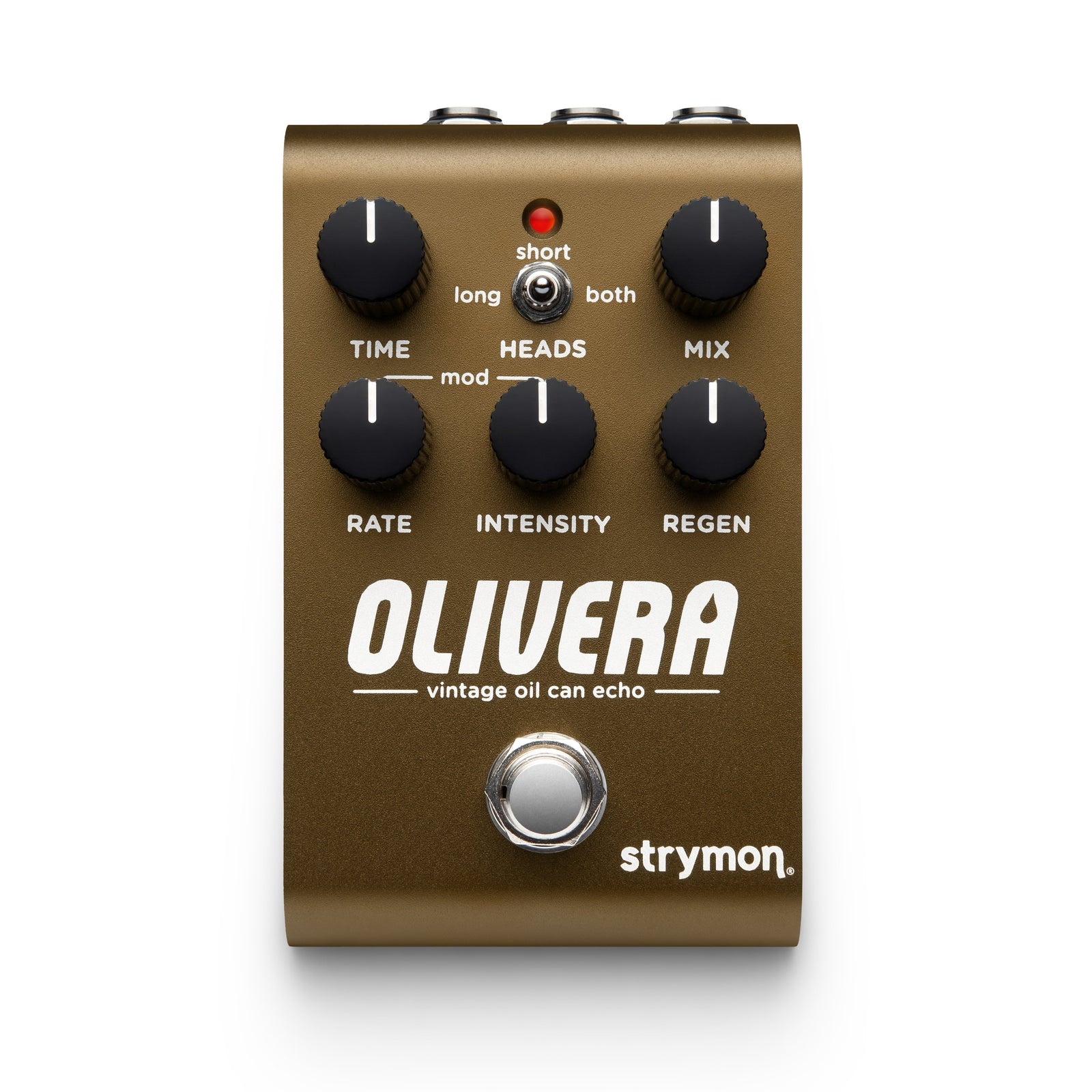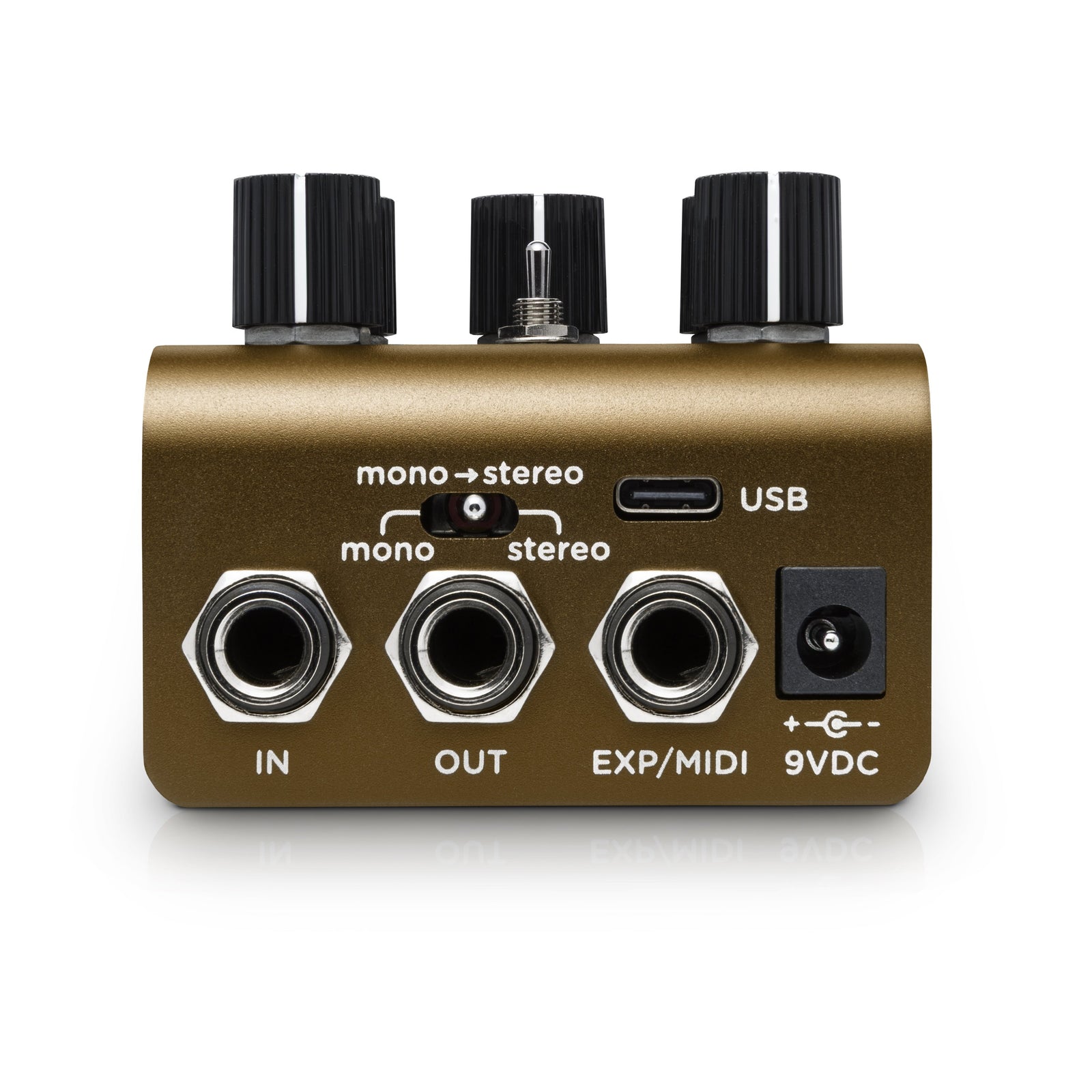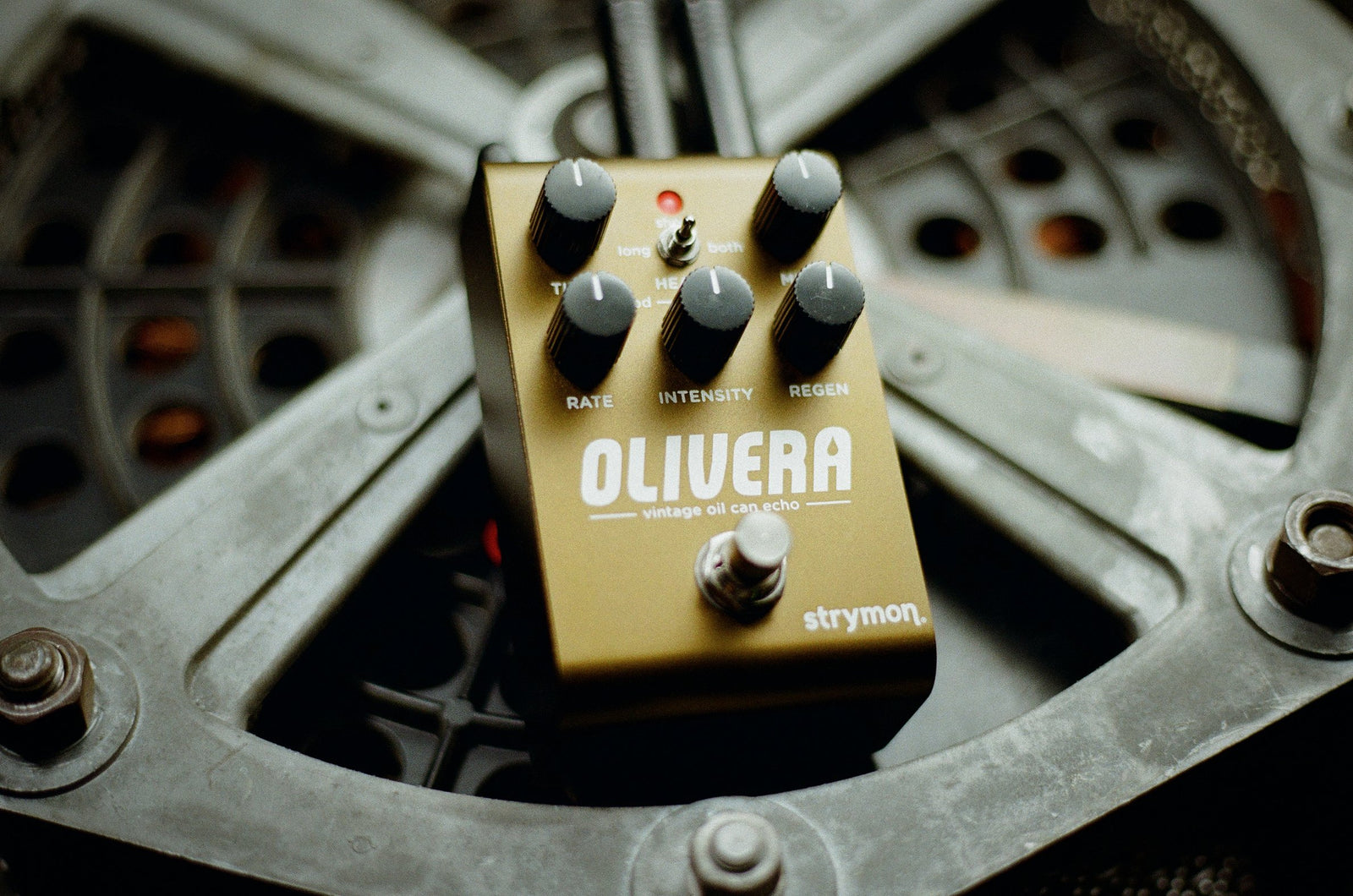


Strymon Olivera
Well Oiled Machine
Turn the clock back to a time when audio effects were still uncharted territory, and experience the vintage syrupy warble of a true oil can echo.
From dark and modulated repeats to sustaining textures that approach the sound of classic spring reverb tanks, Olivera is the first pedal emulation that truly captures the mechanical yet wildly organic nature of these oddball machines, bringing funky inspiration to anything you run through it.
Different By Design
The first oil can echoes were made by the Tel-Rey company in 1959, achieving the repeats using a small rotating can filled with conductive oil as the dielectric material instead of tape. This novel approach yields very different sounds than what you would hear from a tape machine, and the results instantly transport the listener to a darker and murkier place that positively oozes vibe.
The sheer number of variables in the design made authentic emulation challenging, requiring a ton of research and a brand new algorithm to get to the realism that we set out to achieve. We feel confident that Olivera captures the true soul of the original units, from the dark repeats with unique rhythmic and decay characteristics to the unreal thick modulation that changes and morphs as the audio does. No other type of delay can do what an oil can does, and no other pedal emulation comes close to Olivera.
Vintage Stereo Echo Enhanced With Modern Features
Olivera has a host of powerful features that make it easy to integrate these nostalgic sounds into your modern rig: Discrete stereo operation for independent processing of the left and right stereo inputs. A simplified control set and expression pedal and Multiswitch capability. Delay spillover for preserving repeats when the pedal is switched off. Discrete Class A JFET stereo input preamp for exceptional touch sensitivity and ideal frequency response. MIDI control of patch recall and continuous controller data. Premium components, rugged construction that can take a beating and a USB jack for performing firmware updates or controlling the pedal from your computer. Olivera makes it easy.
FEATURES
MIDI
Olivera features full MIDI implementation and 300 presets, allowing you to control it remotely via a MIDI controller or Digital Audio Workstation via either the EXP/MIDI jack or USB connection.
True Buffered Bypass
Olivera allows you to choose between electromechanical relay-switched true bypass for fully untouched and unprocessed signal when the pedal is not turned on (the default behavior), or our premium buffered bypass, which preserves your signal’s integrity by preventing the loss of high frequencies that can happen due to long cable runs.
JFET Input
Our discreet Class A JEFT input preamp is one of our secret weapons, providing the ultimate in dynamics and feel. The preamp circuit prepares the incoming audio to be processed in the most ideal way possible, optimizing for ultra-low noise operation and a flat frequency response.
Stereo
Olivera features full stereo input and output capabilities, processing incoming stereo signals independently so that you can confidently place it anywhere you like in your signal chain.
There are three different input/output routing options, which are accessible from the dedicated switch on the rear panel: Mono In/Mono Out, Mono In/Stereo Out, and Stereo In/Stereo Out. The dedicated TRS stereo Inputs and Outputs make patching easy too (stereo in and out requires a TRS cable of some type for each jack).
ARM Processor
We are now using ARM processors in many of our products, which are an evolution in technology led by mobile devices and laptop computers. These devices offer the ability to perform more simultaneous processes than ever before, while consuming significantly less current. This provides more horsepower for emulating every sonic nuance, with less current draw from your pedalboard’s power supply.
CONTROLS
Time - The Time knob determines the delay time for the repeats by adjusting the rotational speed of the oil can. Some vintage units had a fixed speed, but we’ve allowed the rotational speed to vary between roughly 200ms to 800ms in total delay time, which can be further modified by the Head selection switch.
Heads Control - Vintage oil can echo units had a single record head and two playback heads. The playback head’s distance from the record head determined the decay time of the echo, and you can choose from ‘Short’, ‘Long’ or ‘Both’ with this switch. The ‘Short’ setting selects the head that is the closest to the Record head for the shortest echo, and the ‘Long’ setting selects the head that is the furthest away from the Record Head for the longest echo. The ‘Both’ setting enables both heads at the same time, giving the repeats a lopsided and complex scenario.
Mix - This control determines the mix of the wet and dry signal, with a 50/50 mix of wet and dry occurring at roughly 3 o’clock on the knob.
Rate - controls the speed of the modulation
Intensity - controls the intensity of the modulation, where the modulation becomes much more prominent in the audio mix the higher the position of the knob.
Regeneration - this control was often labeled “reverb” on vintage units, and it controls the amount of echo repeats are fed back into the can to be reprocessed. Higher settings of the knob create a reverberant and atmospheric character, which many would say is one of the signature elements to the sonic character of an oil can echo.
NOTE: Hold the footswitch while turning the Regeneration knob to adjust the tone of the repeats. Noon on the knob is the character that we captured from our reference units, with lower settings being darker, and higher settings brightening the repeats.




